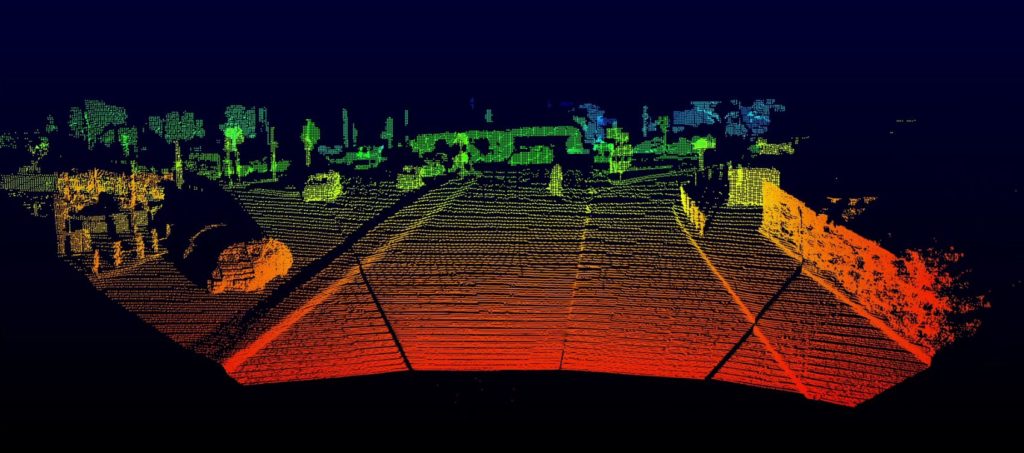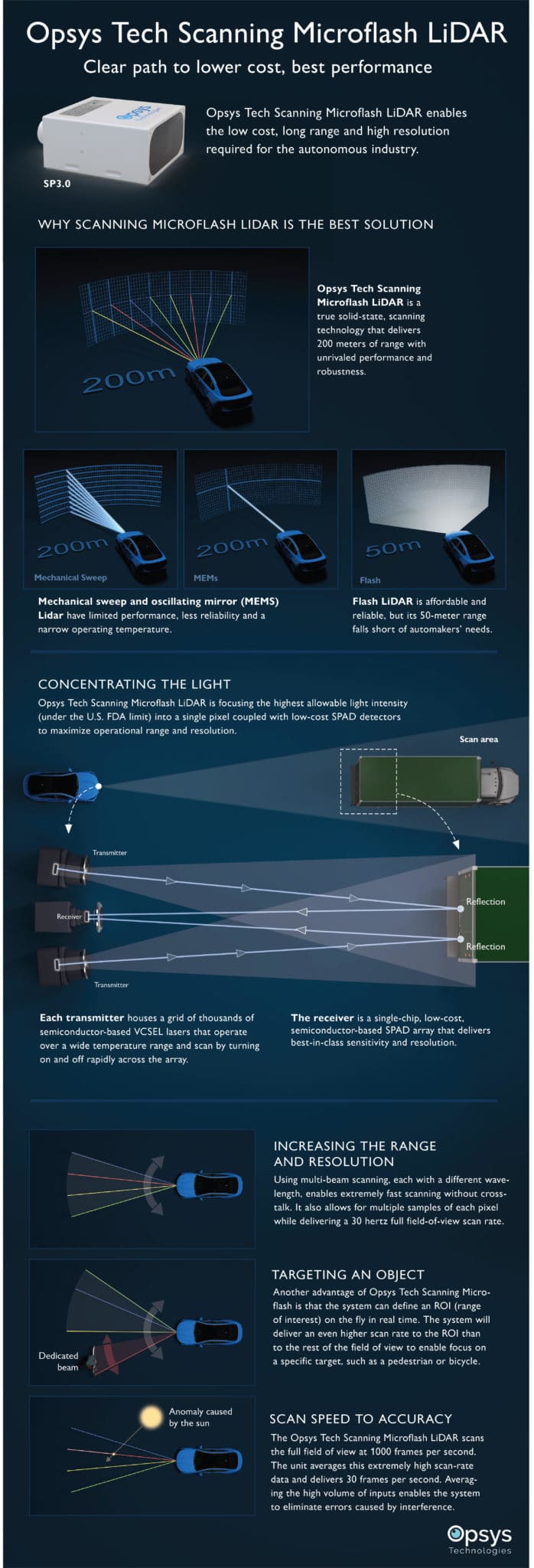Opsys Tech has announced the next generation of its automotive-grade LiDAR, one that combines the advantages of flash LiDAR – namely robustness and a solid-state design – with the range and resolution of scanning LiDAR. Opsys Tech, an Israel-based startup with a history in the fiberoptics communication industry, describes the new offering as a “Scanning Microflash LiDAR.” In addition to greater range and resolution, Opsys Tech will also look to address barriers associated with cost and complexity.
“At Opsys Tech, we’ve spent three years developing a unique solid-state scanning LiDAR technology that is highly efficient, with a scalable cost structure enabling the best value for users,” explained Rafi Harel, Opsys Tech CEO. “We bring significant value by providing high performance alongside a flexible system installation and scalable field of view.”
SP2.5 Scanning Microflash LiDAR
Known officially as SP2.5 Scanning Microflash LiDAR, Opsys Tech says it achieves performance levels beyond near-infrared-laser-based LiDAR. According to the company, the SP2.5 Scanning Microflash LiDAR provides better than four times the range of flash LiDAR and offers a superior resolution and scanning rate. As a purely solid-state system, the SP2.5 Scanning Microflash LiDAR contains no moving parts.
“It’s a static system that allows us many benefits, the first of which is reliability,” Harel explained to me during the Brussels edition of AutoSens 2020. “There is nothing mechanical, like mirrors that may be suffering from shocks and vibrations.”
How It Works
Opsys Tech provides a singular, integrated 4D point cloud with a flexible field by enabling multiple base sensors. According to the company, this allows OEMs, Tier 1 suppliers, and virtual dedicated server (VDS) suppliers a customizable field-of-view configuration for various use cases. A patented multi-wavelength technology enables multiple sensors to operate without interference while maximizing scan rate and eliminating dead zones from the field of view.
A control unit then integrates the data from all base sensors to deliver a single 4D point cloud.
Dividing the field of view into 1,000-times-smaller segments than flash LiDAR, the sensor maximizes power density to capture a greater range while operating under the FDA Class 1 eye-safety limit. Opsys Tech also uses high-density detector arrays coupled with high-density, fully addressable two-dimensional VCSEL arrays (thousands of tiny, pre-focused, semiconductor-based laser arrays) to deliver the resolution, range, and scan rate required for autonomous vehicle applications in a wide range of temperatures and conditions.

Availability & Additional Information
Opsys Tech is currently offering its SP2.5 Scanning Microflash LiDAR for testing. The infographic below includes a brief summary of the specifications and capabilities of the SP2.5 Scanning Microflash LiDAR.



